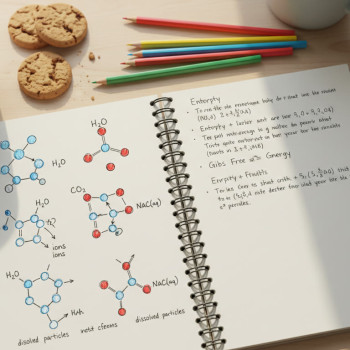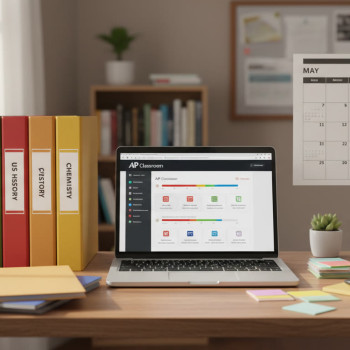How Many AP Practice Tests Should Your Child Buy? A Parent’s Playbook
If you’ve ever watched your child stare at a stack of practice test booklets, wondering whether you’ve spent wisely or just created more paper chaos, you’re not alone. Choosing how many practice tests to buy — and which ones — is one of those seemingly small decisions that actually shape a student’s prep rhythm, confidence, and final score. This guide walks you through a realistic, evidence-informed plan for buying practice tests, working with results, and turning tests into learning opportunities (not just score-chasing). I’ll also share how targeted help — like Sparkl’s personalized tutoring — can fit naturally into the plan if you want 1-on-1 guidance and tailored study plans to amplify every practice test your child takes.

Why Practice Tests Matter (Beyond the Score)
Before deciding how many practice tests to buy, it helps to be clear about what practice tests actually do. They are not magic shortcuts to a higher score, but they are the single most reliable way to simulate test conditions, reveal knowledge gaps, and train time management. Here’s what a well-used practice test delivers:
- Realistic pacing practice (timing is the most common reason students run out of time).
- Diagnostic insight: patterns in wrong answers that point to content or strategy weaknesses.
- Familiarity with question types and wording — especially important for AP free-response and the hybrid digital formats many APs now use.
- Stress inoculation: repeated exposure reduces test-day anxiety and improves focus.
- A concrete way to measure growth — if tests are comparable and scored consistently.
Given those benefits, the real question isn’t whether to buy practice tests — it’s how many you need to provide enough diagnostic data without burning through time or money.
How Many Practice Tests to Buy: A Practical Rule of Thumb
Here’s a simple, parent-friendly framework that balances thorough practice with realistic limits. The guidance below assumes your child is preparing for a single AP subject and has a typical 8–16 week study window before exam day.
- Baseline Students (starting late or taking the AP course concurrently): 3–4 practice tests. Two early diagnostics to identify weak areas, one mid-cycle to assess progress, and one final full-length dress rehearsal within two weeks of the exam.
- Steady Builders (preparing over a semester): 5–7 practice tests. An initial diagnostic, 2–3 focused practice tests spaced through the semester, a simulated exam under test-day conditions 3–4 weeks before the exam, and one or two final reviews.
- Ambitious Score Chasers (targeting a top score or taking multiple APs): 7–12 practice tests. More frequent testing helps refine small strategic gains and sustain momentum. Mix full-lengths with section-specific timed practices.
Why these ranges? Too few tests leave gaps in diagnostic insight. Too many full-lengths can cause fatigue and diminishing returns, especially if the student isn’t using the results to adjust study. The sweet spot is enough tests to see consistent patterns and practice under time pressure, combined with targeted study that acts on those patterns.
Which Practice Tests to Buy: Official vs. Third-Party
All practice tests are not created equal. The College Board releases official free-response questions, sample multiple-choice items, and test previews for digital exams. These official materials are the best gold-standard source for calibration because they reflect the real exam’s voice, format, and scoring guides.
Prioritize Official College Board Materials
Start with official materials whenever possible. The College Board provides:
- Released multiple-choice and free-response questions from past exams (with sample student answers and scoring guidelines).
- Full-length practice exams and Bluebook previews for hybrid digital formats in supported subjects.
- AP Classroom practice exams and question banks (often accessible through your child’s AP teacher).
Official tests are particularly important for free-response sections because the scoring rubrics and sample responses teach the exact level of detail and organization readers look for.
When to Add High-Quality Third-Party Tests
Once you’ve used official College Board materials, supplement with a small number of well-regarded third-party practice exams if you need extra variety or more full-lengths than official sources provide. Use these rules when selecting third-party tests:
- Choose publishers with a strong track record and transparent methodology.
- Prefer third-party tests that are periodically updated to match the current AP format (especially important for subjects that recently shifted to hybrid digital delivery).
- Use them mainly for additional timed practice and strategy work — not for initial calibration.
Remember: the most valuable part of any practice test is the post-test review. If a third-party provider offers thorough explanations and worked solutions that help your child understand errors, the extra practice is worth it.
How to Schedule Practice Tests During Prep
Treat practice tests like training races — spaced to diagnose, practice, and peak. Here’s a practical schedule for a typical 12-week prep window.
| Week Range | Purpose | Action |
|---|---|---|
| Weeks 1–2 | Initial diagnostic | Take one official full-length (or official section set). Score and analyze mistakes with rubrics. |
| Weeks 3–6 | Targeted practice | 2–3 focused practice sessions: section-timed tests (e.g., multiple-choice only, or free-response only). Review deeply; build targeted practice sets. |
| Week 7 | Mid-cycle assessment | Take a second full-length practice test to measure improvement and adjust the plan. |
| Weeks 8–10 | Skill sharpening | Drill specific weaknesses uncovered by diagnostics; alternate timed sections with review days. |
| Week 11 | Dress rehearsal | One full-length under simulated test-day conditions. Time it, use allowed resources, and practice exam-day logistics. |
| Week 12 | Polish | One light review test (short sections or problem sets) and focus on rest, stamina, and exam-day strategy. |
This schedule keeps students steadily progressing while preserving energy for the real exam. A key principle: fewer, higher-quality full-lengths plus many targeted timed sections beats an endless stream of hurried full tests.
Timing Tips: When to Take The Final Full-Length
Plan the final full-length dress rehearsal about 7–14 days before the AP exam. That timing gives enough runway for last-minute tuning while leaving time to recover and consolidate rather than cram. If your child’s score dips on that final rehearsal, use it as a focused troubleshooting session rather than panic; sometimes small technique fixes yield fast gains.
How to Use Practice Test Results Effectively
Every practice test needs a post-mortem. Without a structured review, a practice test is only a confidence boost (or a discouraging surprise). Here’s a fast, repeatable review routine parents can help facilitate.
The 4-Step Post-Test Review
- Step 1: Score and Normalize. Record the raw score and convert to an estimated AP score range using historical rubrics or College Board conversion guidance if available for the subject.
- Step 2: Error Categorization. For each wrong answer, write whether it was a Content Error, Careless Mistake, Timing/Strategy Error, or Misreading. This simple classification makes patterns obvious.
- Step 3: Targeted Practice Plan. Create a mini plan: 2–3 focused practice tasks for each recurring error type. Example: if trig identities cause errors, assign 5 targeted problems each day for a week with timed review.
- Step 4: Track Progress. Keep a simple spreadsheet or journal of problem types, scores, and improvements. Seeing incremental gains keeps motivation high.
Parents don’t need to be tutors to support this process. Encouragement, logistics (blocking time), and helping your child schedule the review are often the most helpful contributions. If you want deeper, subject-matter help, that’s where 1-on-1 tutoring can fit in — for instance, Sparkl’s personalized tutoring pairs expert tutors with tailored study plans and AI-driven insights so each practice test becomes a clear roadmap for what to practice next.
Specific Considerations by AP Subject
Not all APs are the same. For example, free-response-heavy subjects (AP English, AP History, AP Calculus) and hybrid digital subjects have different practice needs than multiple-choice-dominant exams. Below are a few subject-specific tips to refine how many tests to buy and which types to prioritize.
APs with Heavy Free-Response Weight
- Buy several official free-response question sets with scoring guidelines — these teach exactly what readers look for.
- Practice timed essays or long-response questions under realistic conditions at least 3–4 times during prep.
- Use exemplar scored responses to model structure and evidence use.
Math and Science APs
- Mix full-lengths with targeted problem sets (e.g., a 45–60 minute session on kinetics or integrals) to build procedural fluency.
- Include calculator and non-calculator practice in the mix according to the exam rules.
Language and Data-Interpretation Heavy APs
- Practice with authentic stimulus sets (graphs, passages) and time reading + response synthesis.
- For languages, include official speaking or writing prompts if the exam includes performance components.
How Much Do Practice Tests Cost — and Are They Worth It?
Budget matters. Official College Board released materials are often free online (sample questions, rubrics, and some full-lengths), while printed or bundled practice tests and third-party materials cost money. Many families find a hybrid approach best: rely on free official resources for calibration and buy 2–4 high-quality full-lengths (official or carefully chosen third-party) to supplement.
Ask yourself: Will this purchase create practice that otherwise won’t happen? If buying a test converts vague intentions into structured practice sessions, it’s more likely to be worth the cost.
Integrating Tutoring and Data-Driven Support
Practice tests generate data; tutoring turns that data into targeted instruction. If your child struggles to interpret patterns from practice tests or to translate weaknesses into daily practice, consider periodic expert reviews. Personalized tutoring can help by:
- Interpreting diagnostic patterns quickly and turning them into a short-term plan.
- Providing 1-on-1 instruction on content gaps and test-taking strategy.
- Using AI-driven insights and progress tracking to pinpoint efficient practice moves.
Sparkl’s personalized tutoring is one example of a support model that combines expert tutors with tailored study plans and AI-informed feedback, helping students maximize every practice test they take without wasting precious prep time.
Common Mistakes Parents See (and How to Avoid Them)
Parents often make coaching errors with good intentions. Here are the most common missteps and how to steer clear:
- Buying Too Many Tests Upfront. This can encourage test-taking for its own sake. Buy an initial set and add more based on diagnosed needs.
- Skipping the Post-Test Review. Without analysis, tests don’t teach. Schedule review blocks right after each practice test when feedback and notes are fresh.
- Overemphasizing Raw Scores. Focus instead on trends: Are careless errors dropping? Is time management improving? Small trend wins are real gains.
- Ignoring Test Format Changes. Some AP subjects have evolved to hybrid digital formats. Make sure practice materials reflect the current delivery (Bluebook previews, digital practice where available).
Checklist: What to Buy and When
Use this quick checklist to guide purchases and scheduling.
- Buy at least one official full-length or official section set early for baseline diagnosis.
- Ensure access to released free-response questions and scoring guidelines for the subject.
- If your child needs more full-lengths than official resources provide, add 1–3 reputable third-party exams mid-cycle.
- Reserve one full-length dress rehearsal 7–14 days before the exam.
- Consider periodic tutoring sessions after 2–3 practice tests to interpret results and refine the plan.
Example Plans: Three Real-World Scenarios
Here are three concrete plans that match common family situations.
Scenario 1: Busy Junior Taking AP Biology (12-Week Prep)
- Week 1: Official diagnostic full-length (online sample sections + released FRQs).
- Weeks 2–6: Section-focused timed practice 2x/week; content review modules on weak topics.
- Week 7: Third-party full-length to practice stamina and different wording.
- Weeks 8–10: Targeted FRQ practice twice, with teacher or tutor feedback.
- Week 11: Dress rehearsal official full-length under timed conditions.
- Week 12: Light review and rest.
Scenario 2: Student Aiming for a 5 on AP Calculus AB (Semester-Long)
- Start of semester: Official diagnostic and CED (Course and Exam Description) review.
- Monthly: One full-length (official or high-quality third-party) to check progress.
- Weekly: Section practice and problem sets; calculator vs. non-calculator alternation.
- Final month: Two full-lengths (one mid-month, one 10 days before exam) and multiple targeted FRQ practices.
Scenario 3: Late Starter for AP English Language (8 Weeks)
- Week 1: One official full-length diagnostic focusing on timed essays.
- Weeks 2–5: Two timed essays per week using released prompts with rubric-based scoring.
- Week 6: One mixed third-party practice test to expose to new passage styles.
- Week 7: Review and focused editing practice.
- Week 8: Final dress rehearsal and polishing of essay templates and evidence recall.
Final Thoughts: Quality Over Quantity, With a Plan
Buying practice tests is an investment — in time, attention, and money. The most successful families treat practice tests as controlled experiments: define the question (what are we testing?), run the test under consistent conditions, analyze the results, and change the study approach based on what the data show. A handful of high-quality official tests, supplemented with targeted third-party materials and strategic tutoring when needed, will usually beat a scattershot approach.
Parents can help most effectively by keeping practice tests regular but purposeful, supporting calm review sessions after every test, and helping their child stick to a pacing plan. If you want more hands-on help interpreting practice test data and turning it into an efficient study plan, consider expert 1-on-1 support — tutoring that offers tailored study plans and AI-informed insights can make each practice test substantially more valuable.

Quick Reference: What to Buy Right Now
If you’re ready to make a purchase today, here’s a minimal starter bundle that works for most AP subjects:
- Download or print one official full-length diagnostic (free if available) for immediate baseline.
- Secure 2–3 official released free-response sets with scoring guidelines for guided practice.
- If you need more full-lengths, buy 1–2 reputable third-party tests to extend practice capacity.
- Book a short tutoring or feedback session after the first two full-lengths to translate results into a plan (optional but high ROI).
Parting Advice for Parents
Keep the conversation calm and pragmatic: tests reveal opportunities, not fixed destinies. Celebrate improvements in pacing and fewer careless mistakes as much as jumps in raw scores. Encourage a growth mindset: with a smart mix of official practice, targeted review, and occasional expert input, most students can make meaningful gains without burning out.
And when in doubt: start with the official materials, use practice tests to diagnose and prioritize, and ask for targeted support — whether that’s a few tutor sessions or a tailored plan that turns every practice test into a stepping stone toward success. Your steady presence, sensible scheduling, and belief in the process will make more difference than any single booklet.
Need a Hand Translating Test Results into a Study Plan?
If you’d like help turning your child’s practice test results into a custom study plan, a few sessions of targeted tutoring can accelerate progress. Personalized tutors who combine content expertise with data-driven feedback (and even AI-driven insights) can make every practice test count, focusing work on the exact skills that move the needle.
Good luck — and remember: steady, thoughtful practice beats frantic cramming every time. You’ve got this — and your student does too.
























No Comments
Leave a comment Cancel